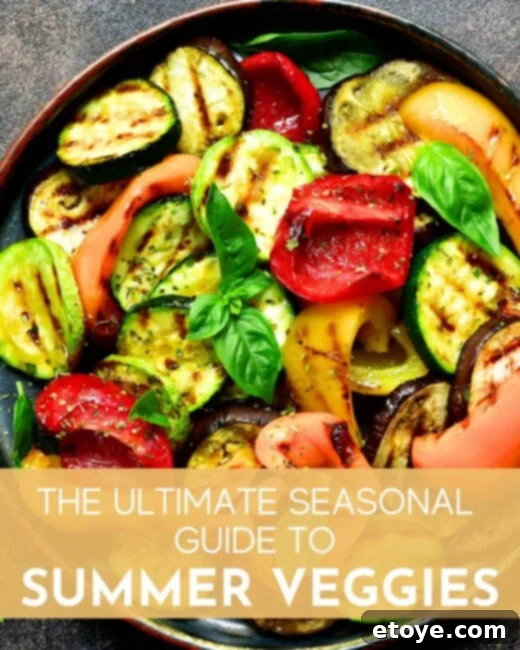Summer is a season synonymous with warmth, sunshine, and vibrant outdoor gatherings. But beyond the barbecues and beach days, it’s also a prime time for nature’s bounty to flourish: an abundance of fresh, colorful, and incredibly nutritious vegetables. Whether you’re a seasoned culinary expert or just starting your journey in the kitchen, incorporating these seasonal delights into your meals is both simple and deeply rewarding. Embracing summer vegetables not only elevates your dishes with their unparalleled flavor and freshness but also provides a powerful boost to your health and well-being. This comprehensive guide will explore the wonders of summer produce, diving into their unique health benefits, versatile culinary applications, and essential tips for selection and storage, helping you make the most of this deliciously healthy season.
Embracing the Best of Basic Summer Vegetables
Green Beans: Crisp, Nutritious, and Versatile

Often overlooked, green beans are a quintessential summer vegetable, celebrated for their satisfying crunch and impressive versatility. At their peak during the warmer months, these slender legumes are a delightful addition to almost any meal. Their mild, slightly sweet flavor makes them perfect for quick stir-fries, light summer salads, or simply steamed to perfection with a touch of garlic, a drizzle of olive oil, and a sprinkle of sea salt. For a creative twist, try sautéing them with toasted almonds or incorporating them into a hearty pasta primavera.
Beyond their culinary appeal, green beans are a powerhouse of nutrition. They are exceptionally rich in essential vitamins, including Vitamin A, crucial for vision and immune function; Vitamin C, a potent antioxidant; and Vitamin K, vital for blood clotting and bone health. Furthermore, green beans are an excellent source of dietary fiber, which not only aids digestion and promotes a healthy gut microbiome but also contributes to satiety, making them a great choice for weight management. Their low-calorie count and high antioxidant content, including various flavonoids and carotenoids, help combat free radicals, potentially reducing the risk of chronic diseases and supporting overall cellular health.
Bell Peppers: A Rainbow of Flavor and Health
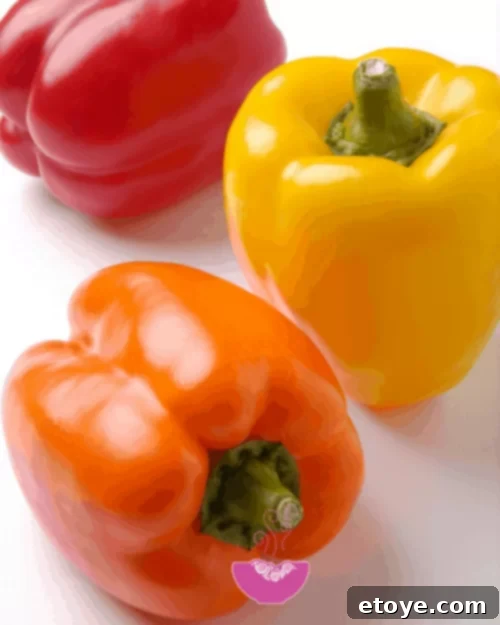
Bell peppers are the undisputed stars of summer, gracing our tables in a magnificent spectrum of colors—vibrant green, sunny yellow, fiery red, and bright orange. Each color offers a subtly different flavor profile, with red and orange varieties typically being sweeter. Their naturally sweet and crunchy texture makes them incredibly adaptable to a wide array of dishes. They are superb for grilling, where their sugars caramelize beautifully, yielding a smoky sweetness. They also shine brightly in fresh salads, adding a delightful crunch and burst of flavor. Imagine a refreshing summer salad featuring sliced bell peppers, fresh basil, crumbly feta cheese, and a light vinaigrette – a true taste of the season. Beyond salads and grilling, bell peppers are fantastic in stir-fries, fajitas, stuffed with grains and meat, or finely diced for salsas and vibrant gazpacho.
These colorful gems are nutritional champions, particularly renowned for their exceptionally high Vitamin C content. A single medium-sized bell pepper can provide well over 150% of your daily recommended intake of Vitamin C, making it a formidable ally for immune system support and skin health, as Vitamin C is crucial for collagen production. They also supply a good amount of Vitamin A, primarily in the form of beta-carotene, which is vital for maintaining healthy vision and robust immune function. Moreover, bell peppers are packed with an impressive array of antioxidants, including lycopene (especially in red peppers), lutein, and zeaxanthin, which work synergistically to protect cells from oxidative damage, reduce inflammation, and may lower the risk of certain cancers and age-related macular degeneration. Their rich nutrient profile, combined with their low-calorie count, makes them an invaluable addition to any healthy diet.
Sweet Corn: The Taste of Summer Tradition

No summer culinary experience is complete without the quintessential taste of sweet corn. This versatile grain, often treated as a vegetable, embodies the sweetness of the season. Its culinary applications are boundless: grill it on the cob for that classic smoky flavor, boil it until tender and glistening, or transform its kernels into creamy salads, vibrant salsas, or comforting chowders. The secret to truly exceptional sweet corn lies in its freshness. Its natural sugars begin to convert to starch shortly after harvesting, so sourcing it directly from a local farmers’ market ensures you get the sweetest, most flavorful kernels. When selecting, look for husks that are bright green and tightly wrapped, and kernels that are plump and milky when gently pressed.
Sweet corn is more than just a delicious treat; it’s a source of valuable nutrients. It provides a good amount of dietary fiber, which is crucial for digestive health, promoting regularity, and potentially helping to lower cholesterol levels. It’s also a notable source of B-complex vitamins, including folate (folic acid), thiamine, niacin, and pantothenic acid. These vitamins play a vital role in energy production, converting food into fuel, and supporting brain health and nerve function. Furthermore, sweet corn contains beneficial antioxidants such as lutein and zeaxanthin, both of which are particularly important for eye health. These compounds accumulate in the retina, helping to filter harmful blue light and protect against age-related macular degeneration and cataracts, ensuring your vision stays sharp for years to come.
Discovering Summer Squashes and Earthy Potatoes
Summer Squash: Zucchini and Yellow Squash
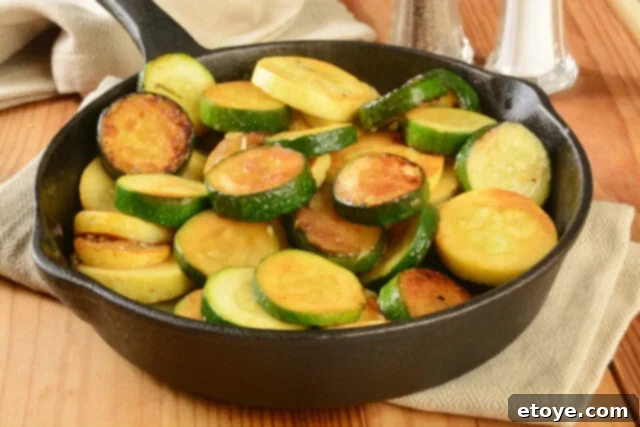
Summer squash, encompassing both the beloved zucchini and its bright yellow counterpart, is a prolific and adaptable vegetable that truly defines the summer harvest. Its delicate flavor and tender texture make it incredibly versatile in the kitchen, lending itself to a vast array of cooking methods. You can sauté it quickly with herbs, grill it for a smoky char, roast it until tender, or even bake it into savory loaves and muffins. Get creative by stuffing halves with a medley of grains and cheeses, spiralizing it into “zoodles” as a low-carb pasta alternative, or adding thinly sliced rounds to homemade pizzas and fresh summer salads. For a true taste of Provence, incorporate it into a classic ratatouille alongside other summer favorites like tomatoes and bell peppers.
From a health perspective, summer squash is a nutritional gem. It’s rich in Vitamin A, vital for healthy skin, vision, and immune defense, and Vitamin C, a powerful antioxidant that protects cells from damage. Its generous dietary fiber content promotes excellent digestive health, aids in regulating blood sugar levels, and contributes to a feeling of fullness. Perhaps one of its most valuable attributes during the warmer months is its exceptionally high water content, making it an ideal food for staying hydrated and supporting overall bodily functions in the heat. Furthermore, summer squash provides modest amounts of B vitamins, manganese, and potassium, all contributing to energy metabolism and electrolyte balance.
Bottle Gourd: The Unique Calabash

Lesser known in some Western cuisines but a staple in many parts of Asia and Africa, bottle gourd, also referred to as calabash or ‘lauki,’ offers a distinct, mild flavor profile that can be surprisingly versatile. Its firm, white flesh and subtle taste make it an excellent canvas for absorbing the flavors of other ingredients. It is commonly used in hearty soups and stews, providing a tender texture, and can even be grated and incorporated into traditional desserts. For a unique culinary experience, try stuffing bottle gourd halves with a spiced lentil or vegetable mixture and baking them until tender, or thinly slicing and adding to aromatic curries.
Beyond its culinary uses, bottle gourd is highly regarded for its impressive health benefits. Like summer squash, it boasts a remarkably high water content, making it an excellent choice for hydration, particularly important during hot weather. It’s a good source of Vitamin C, which is crucial for immune system strength and healthy skin, and contains various antioxidants that help combat inflammation and protect cells from damage. Being low in calories and rich in dietary fiber, bottle gourd actively supports digestive health, promotes satiety, and can be a valuable component of a weight management plan. Traditional medicine often hails its cooling properties and its potential to support liver function and address various digestive ailments, making it a truly beneficial addition to your summer diet.
New Potatoes: The Delicate Gems of Early Summer
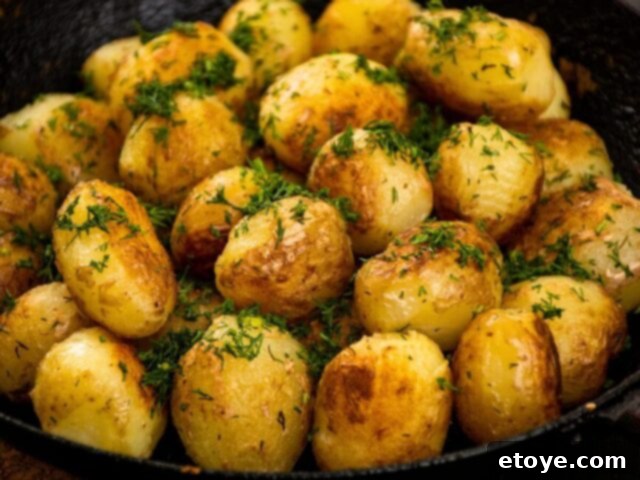
Early summer introduces us to the delightful arrival of new potatoes – small, tender, and incredibly flavorful spuds that are best savored shortly after being freshly harvested. Distinguished by their thin, delicate skins and creamy, often slightly waxy interiors, new potatoes offer a more nuanced flavor and texture compared to their mature counterparts. Their size and texture make them exceptionally versatile for various cooking methods: roast them until golden and crispy, boil them gently until tender, or even grill them for a smoky summer side. They are particularly outstanding when simply tossed with fresh herbs, a good quality olive oil, and a pinch of salt, forming an irresistible accompaniment to any summer meal.
New potatoes are more than just a delicious side; they’re packed with important nutrients. They are a significant source of Vitamin C, which is vital for bolstering immune health, promoting collagen production for healthy skin and connective tissues, and acting as an antioxidant. Furthermore, these tender tubers provide a healthy dose of potassium, an essential electrolyte crucial for maintaining healthy blood pressure, proper muscle function, and fluid balance within the body. Their dietary fiber content, though perhaps less than that of sweet potatoes, still contributes to digestive wellness and helps stabilize blood sugar levels, preventing rapid spikes and crashes. Enjoying new potatoes with their skins intact maximizes their nutritional benefits, as many vitamins and minerals are concentrated just beneath the surface.
Sweet Potatoes: A Late Summer Sweetness
While available year-round, sweet potatoes truly come into their own in late summer and early autumn, reaching their peak sweetness and flavor during these months. These vibrant, earthy vegetables are incredibly versatile, offering both savory and sweet culinary possibilities. They can be roasted to bring out their natural sugars, mashed into a comforting side dish, or cut into fries for a healthier alternative to potato chips. Beyond these popular preparations, sweet potatoes make a fantastic addition to hearty soups, stews, and casseroles, adding both depth of flavor and nutritional density. For those with a sweet tooth, they can be transformed into delicious pies, muffins, or even cookies, showcasing their natural sweetness in a unique way.
Sweet potatoes are nutritional powerhouses, packed with an abundance of essential vitamins and minerals. They are exceptionally rich in Vitamin A, primarily in the form of beta-carotene, which is converted to Vitamin A in the body. This nutrient is critical for maintaining healthy vision, supporting a robust immune system, and promoting radiant skin. They also boast significant amounts of Vitamin C, a powerful antioxidant, and manganese, a mineral vital for bone health, metabolism, and antioxidant defense. Of course, sweet potatoes are also an excellent source of dietary fiber, which aids digestion, promotes gut health, and helps regulate blood sugar levels. Their high antioxidant content, particularly beta-carotene, helps combat inflammation throughout the body and provides protection against chronic diseases, making sweet potatoes a cornerstone of a healthy diet.
Looking for a Different Kind of Summer Heat?
Hot Peppers: Spice Up Your Summer Dishes
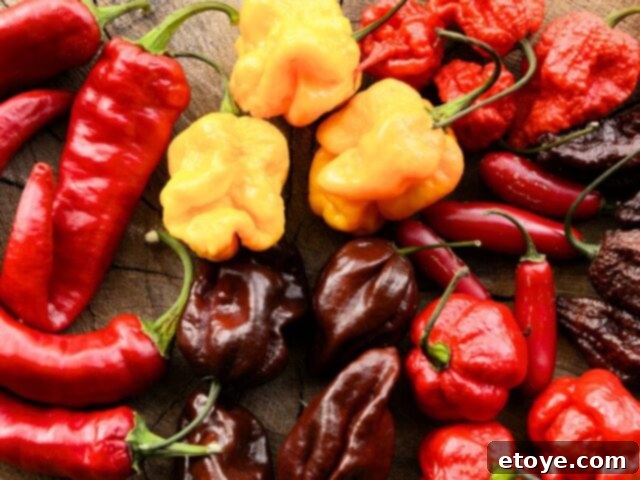
For those who crave a fiery kick in their summer meals, hot peppers are an absolute must. The warm summer sun invigorates these spicy, colorful gems, bringing them to their peak flavor and heat. From the milder jalapeños and poblanos to the intensely hot habaneros and serranos, there’s a hot pepper to suit every palate and heat tolerance. Their versatility in the kitchen is immense: incorporate them into zesty salsas, infuse them into marinades for grilled meats, or blend them into vibrant sauces to add a unique flavor boost and a spicy punch. They are fantastic grilled alongside other vegetables, sliced into stir-fries, or simmered into spicy soups and stews. You can even use them to infuse oils for a spicy drizzle or create deliciously zesty pickles for a year-round taste of summer heat.
Beyond their ability to awaken the taste buds, hot peppers offer a surprising array of health benefits, largely attributed to capsaicin, the compound responsible for their heat. Capsaicin has been shown to boost metabolism, potentially aiding in weight management, and possesses powerful pain-relieving and anti-inflammatory properties. It also supports cardiovascular health by potentially lowering blood pressure and cholesterol levels. Furthermore, hot peppers are rich in essential vitamins, including generous amounts of Vitamin A and Vitamin C. These vitamins are crucial for strengthening the immune system, protecting against infections, and maintaining healthy skin and eyes. So, go ahead and add a little spice to your life—your body will thank you!
Wanna Keep It Cool? Refreshing Summer Vegetables
Cucumber: The Ultimate Hydration Hero
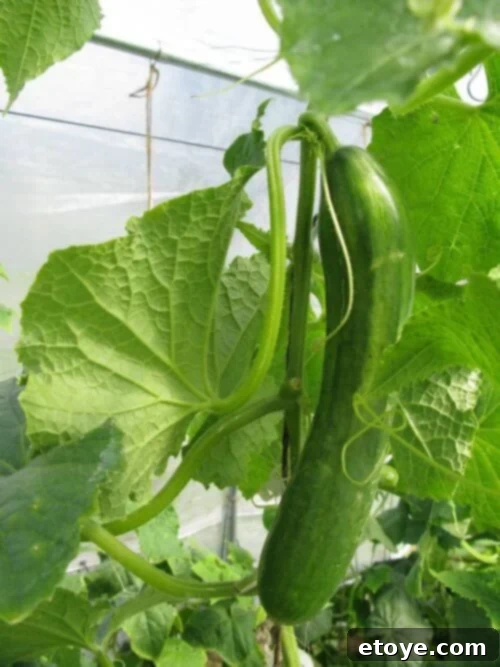
On those scorching summer days, nothing is quite as refreshing and cooling as the crisp, clean taste of cucumber. This hydrating vegetable offers a delightful crunch and a subtle flavor that makes it a perfect addition to a variety of dishes. Cucumbers are excellent for adding a refreshing element to salads, sandwiches, and wraps, providing both texture and a burst of moisture. For an even more invigorating drink, slice them and add to a pitcher of water with a sprig of mint or a slice of lemon. They can also be blended into hydrating smoothies or cold soups like gazpacho. Cucumbers are a staple in dips like tzatziki, offering a cooling counterpoint to garlic and herbs, or simply enjoyed on their own. Elevate their natural flavor with a squeeze of fresh lemon juice, a dash of Tajin, or a hint of hot sauce, or combine all three for a truly unique snack.
As mentioned, cucumbers are celebrated for their exceptionally high water content, which is crucial for staying hydrated during warm weather and for promoting healthy, radiant skin. Despite being incredibly low in calories, they are surprisingly rich in Vitamin K, an essential nutrient vital for proper blood clotting and maintaining strong, healthy bones. Additionally, cucumbers contain valuable antioxidants, including beta-carotene and various flavonoids, which help combat inflammation throughout the body and protect against cellular damage, thereby reducing the risk of numerous chronic diseases. Their hydrating and nutrient-rich profile makes them an indispensable part of any summer diet focused on wellness and refreshment.
Bitter Gourd: A Taste for Wellness
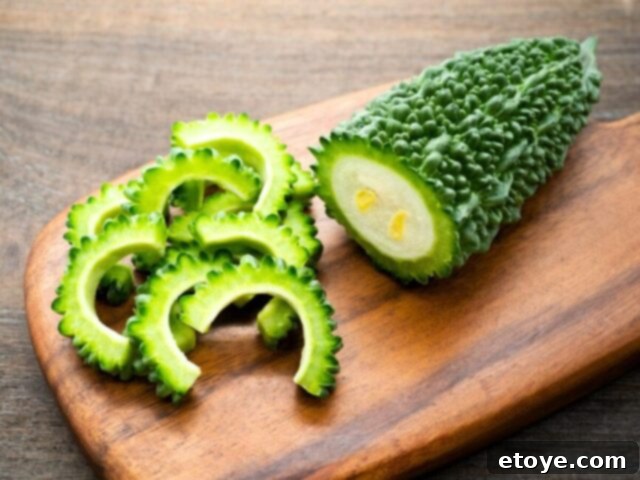
Bitter gourd, or bitter melon, is a distinctive summer vegetable with a reputation for its uniquely bitter taste. While it might be an acquired palate, its profound health benefits and versatility in global cuisines make it worth exploring. It is commonly featured in a variety of dishes, adding an interesting depth to stir-fries, flavorful curries, and comforting soups. For a more substantial meal, it’s often stuffed with aromatic spices and herbs and then baked or steamed. Juicing bitter gourd is also a popular way to consume it as a powerful health tonic, often diluted with other fruits or vegetables to balance its intense flavor.
Despite its challenging taste, bitter gourd’s impressive array of health benefits is its main appeal. It is rich in vital nutrients such as Vitamin C, which significantly boosts immune function and promotes healthy skin, and Vitamin A, essential for vision. Bitter gourd contains unique compounds that have been scientifically studied for their ability to help regulate blood sugar levels, making it particularly beneficial for individuals managing diabetes. Furthermore, it boasts significant anti-inflammatory properties, supports liver health by aiding detoxification, and enhances digestion, contributing to a healthy gut. Its rich antioxidant profile also helps protect the body against oxidative stress. Incorporating bitter gourd into your diet, even in small amounts, can offer a remarkable boost to your overall health and well-being.
When to Buy What: A Seasonal Harvest Guide
Timing is everything when it comes to experiencing summer vegetables at their peak flavor and nutritional value. Buying produce when it’s in season means you’re getting the freshest, most delicious options, often at their most affordable. Here’s a quick guide to help you navigate the summer harvest:
- Early Summer (June): This is the prime time for delicate new potatoes, fresh green peas, and the first harvests of tender leafy greens.
- Mid to Late Summer (July-August): The season explodes with abundance. Look for plentiful summer squash (zucchini, yellow squash), crisp cucumbers, and vibrant green beans. Sweet corn starts becoming widely available, along with the first batches of bell peppers.
- Late Summer to Early Fall (August-September): As summer gently transitions, a new wave of produce emerges. This period is ideal for ripe eggplant, an abundance of sweet corn, the sweetest bell peppers, and the earthy richness of sweet potatoes. Don’t forget tomatoes, which, while botanically fruits, are culinary staples of the summer vegetable garden and reach their peak ripeness now.
Tips for Storing and Using Your Summer Vegetables Wisely

Maximizing the freshness and longevity of your summer vegetables is key to enjoying them to their fullest. Proper storage ensures they retain their crispness, flavor, and nutrient content. Most summer vegetables, such as tomatoes, bell peppers, and cucumbers, can be kept at room temperature for a day or two if they are to be consumed quickly. However, for longer storage, refrigeration is generally recommended to slow down ripening and prevent spoilage. For example, tomatoes should ideally ripen at room temperature to achieve their best flavor, and then be moved to the refrigerator to extend their shelf life.
To ensure you utilize every last bit of your summer bounty before it spoils, here are some creative and delicious ideas:
- Grill Them Up!: Grilling is perhaps the quintessential summer cooking method, and it’s perfectly suited for vegetables. Bell peppers, zucchini, yellow squash, corn on the cob, and even new potatoes become incredibly flavorful when grilled. The high heat caramelizes their natural sugars, imparting a delicious smoky sweetness and a tender-crisp texture. Brush with a little olive oil and your favorite herbs before grilling.
- Toss Them into Refreshing Salads: For a burst of raw flavor and maximum nutrient retention, incorporate summer vegetables into fresh, vibrant salads. Sliced cucumbers, chopped green beans, bell pepper strips, and even thinly shaved zucchini add incredible texture and taste. Pair them with light vinaigrettes and other seasonal ingredients for a truly satisfying meal.
- Create a Stunning Veggie Platter: A colorful vegetable platter is a fantastic way to showcase the beauty of summer produce and offer a healthy, appealing appetizer to guests. Arrange an assortment of bell pepper strips, cucumber slices, blanched green beans, cherry tomatoes, and carrot sticks. Elevate it with a homemade dip made from Greek yogurt, fresh lime juice, and a medley of chopped herbs like dill and mint. It’s a simple yet elegant way to encourage healthy snacking.
- Roast for Deeper Flavors: Roasting brings out the natural sweetness and depth of flavor in many root vegetables and some summer squashes. Carrots, sweet potatoes, and new potatoes transform into wonderfully tender and flavorful delights when roasted. Toss them with a good quality olive oil, sea salt, black pepper, and your favorite robust herbs such as rosemary or thyme, then roast until tender and beautifully golden brown.
- Freeze for Future Enjoyment: Many summer vegetables can be blanched and frozen to preserve their goodness for colder months. Green beans, corn kernels, and zucchini slices all freeze well, allowing you to enjoy the taste of summer long after the season ends.
Don’t Forget to Support Your Local Farmers
One of the most rewarding ways to experience the magic of summer produce is by sourcing your vegetables directly from local farmers’ markets. This practice offers numerous benefits that extend beyond simply acquiring fresh food. By supporting local farmers, you contribute directly to the sustainability of local agriculture, help preserve green spaces, and strengthen your community’s economy. Produce from farmers’ markets typically travels a much shorter distance from farm to table, meaning it’s harvested at its peak ripeness, resulting in superior freshness, flavor, and often higher nutritional value compared to supermarket alternatives. Engaging with farmers also provides an opportunity to learn more about how your food is grown and discover unique, heirloom varieties you might not find elsewhere. It’s a genuine win-win situation for both consumers and producers.
Time to Summer Veg Out!
We hope this ultimate guide has inspired you to explore and savor the incredible world of summer vegetables. From their vibrant flavors and versatile uses to their profound health benefits, summer produce offers an unparalleled opportunity to eat well and feel great.
What’s your absolute favorite summer vegetable, and how do you love to prepare it? Do you have any secret tips or tricks for spotting the best produce at the market or unique storage hacks? We’d love to hear all your summer veggie wisdom! Please share your thoughts and recipes in the comments section below and join our community of summer produce enthusiasts.
